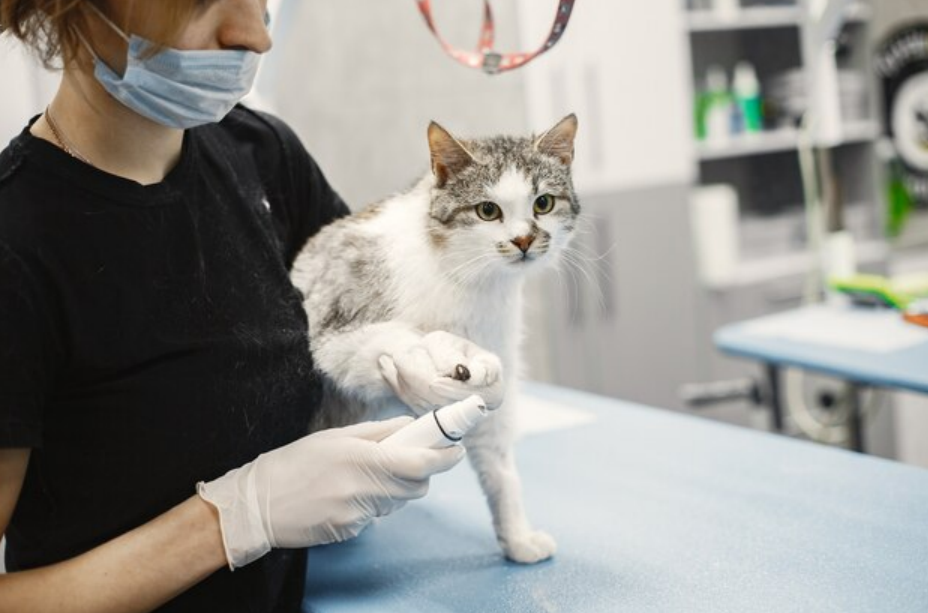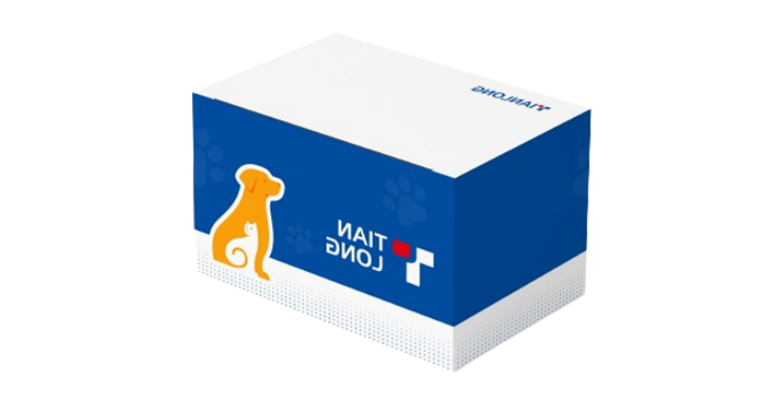Just as is the case with humans, cats may become vulnerable to respiratory diseases within a short time. These illnesses begin gradually to interfere with the breathing ability of a cat, thereby affecting its general well-being. If left without treatment, a cat becomes subjected to severe instances of breathing complications, which makes it hard for the cat to eat or even play. Chronic illness, pain, and even death occur over time. But what if there existed an easy way of early diagnosis of such feline respiratory distress?

(Copyright image from: https://www.freepik.com/free-photo/medium-shot-elderly-man-with-cat_37558871.htm#fromView=search&page=1&position=15&uuid=816ee95a-eef6-477e-ac7c-e222b996f8fb)
Why Cats Are Susceptible to Respiratory Diseases?
Cats are prone to feline respiratory distress infections. It often happens this way because cats will find each other at animal shelters, homes, or outdoors. Such diseases are caused by pathogens, like viruses and bacteria. Once the pathology has affected a cat's respiratory system, it normally demonstrates symptoms characterized by sneezing, coughing, nasal discharge, and difficulty breathing. Such clinical signs are elements of the feline respiratory disease complex and can make a cat feel pretty ill and affect its overall rate of respiration. These cats need to be diagnosed in time and get the proper treatment. Therefore, a reliable tool that identifies typical pathogens responsible for such diseases will be helpful.
Common Causes of Respiratory Infections in Cats
There are several pathogens responsible for feline respiratory disease complex symptoms. However, the most common ones are:
1. Feline Herpesvirus (FHV-1)
This is one of the critical causes of feline respiratory distress. Its symptoms include sneezing, eye discharge, and nasal congestion. The FHV-1 virus is very contagious since once a cat is infected, it carries it its whole life. Thus, at times of stress, the virus may reactivate and cause new diseases.
2. Feline Calicivirus (FCV)
FCV is another contagious virus that affects the respiratory system and can cause oral diseases. It often co-occurs with FHV-1 and is responsible for many upper respiratory infections (URIs) in cats. Symptoms include sneezing, nasal discharge, ulcers in the mouth (especially on the tongue and gums), drooling, fever, and joint pain. Some strains of FCV can cause severe respiratory distress.
3. Bordetella bronchiseptica (Bb)
Bordetella bronchiseptica is a bacterial pathogen that commonly causes respiratory infections in dogs but can also infect cats. It’s especially prevalent in high-density environments like shelters and catteries. While it typically causes mild symptoms, it can be more dangerous in kittens, older cats, or those with weakened immune systems.
4. Mycoplasma Felis (MF)
Mycoplasma felis is a type of bacteria that lacks a cell wall, making it unique from other bacteria. It can infect the respiratory system, as well as the eyes, causing respiratory infections and conjunctivitis. Mycoplasma infections can be chronic and challenging to treat, particularly when combined with other feline respiratory distress. In some cases, it can lead to pneumonia.
5. Chlamydophila Felis (CF)
This bacterium mainly causes conjunctivitis and cat eye infections and can be cat-to-cat transmitted through direct contact. CF infection is mainly observed in cats that share their environments, for instance, those staying in a cattery or a shelter. This bacterium spreads through direct contact with infected cats, mainly through eye secretions. It can also be spread via contaminated objects like bedding or food bowls.
These five pathogens are the main causes of feline respiratory distress. Early determination of the appropriate pathogen will mean providing the cat with the correct treatment for its condition, improving the cat's health.
Diagnostic Techniques for Feline Respiratory Distress
Diagnosis of a feline showing signs of respiratory distress is made based on various methods by which veterinarians identify the cause of distress. These diagnostic techniques commonly include:
1. Serological Testing
This is an in-blood testing technique whereby one checks whether there are antibodies or antigens in the blood of a cat associated with particular disease-causing pathogens. Serological testing is often employed when veterinarians suspect viral or bacterial infections and want to confirm a diagnosis based on immune response, particularly when combined with clinical symptoms.
2. Radiography and Imaging Techniques
X-rays or other imaging techniques are often available so the veterinarian can see through the body to see the lungs and chest area; changes in form, such as fluid buildup or signs of inflammation, may indicate a respiratory disease. Radiography is commonly used to assess the severity of respiratory distress, particularly when secondary complications like pneumonia, bronchitis, or pleural effusion are suspected.
3. PCR Testing
One of the most reliable methods adopted in detecting pathogens is Polymerase Chain Reaction or PCR testing. This technique can indicate the existence of particular genetic material coming from either bacteria or viruses. This would thus give an accurate and rapid diagnosis. This technique has been of great importance in the detection of respiratory infections caused by multiple pathogens.

(Copyright image from: https://www.freepik.com/free-photo/white-fluffy-cat-veterinarian-with-cats-animals-couch_13320879.htm#fromView=search&page=1&position=0&uuid=9b9b21b7-b248-4612-b635-001fbb3548bb)
TIANLONG's Feline Respiratory 5 Types Pathogen Panel Kit: An Efficient and Effective Diagnostic Solution
For anyone looking for the most accurate and efficient diagnostic tool, a perfect solution can be found in TIANLONG's Feline Respiratory 5 Types Pathogen Panel Nucleic Acid Detection Kit (Fluorescence PCR Method). Here are some reasons why this freeze-dried nucleic acid kit is good for the diagnosis of feline respiratory diseases.
· Accurate Detection
With the advanced technology of PCR, this kit goes around detecting DNA or RNA of the five most common respiratory pathogens in cats, including Feline Herpesvirus, Feline Calicivirus, Bordetella bronchiseptica, Mycoplasma Felis, and Chlamydophila Felis. The fluorescence PCR method ensures high sensitivity and can easily detect the minute presence of genetic material of feline respiratory distress pathogen. This degree of accuracy helps veterinarians quickly determine what ails a cat.
· Internal Control
The kit comprises an internal control for the purification process and is free from contamination. This will provide confidence among users concerning the accuracy and dependability of the results.
· Easy and Simple to Use
TIANLONG's Feline Respiratory 5 Types Pathogen Panel Nucleic Acid Detection Kit is simple to use due to its property of freeze-dried. This reagent only requires reconstitution in water before use, reducing the number of preparation steps and potential for errors compared to traditional liquid PCR reagents. As a result, our Tianlong kit can be highly recommended for veterinary clinics, research labs, and animal shelters for treating feline respiratory distress.
How Feline Respiratory 5 Types Pathogen Panel Nucleic Acid Detection Kit Works?
It is quite easy to use TIANLONG's Feline Respiratory 5 Types Pathogen Panel Nucleic Acid Detection Kit. Here are the basic steps as follows:
· Sample Collection
Sample collection aims to collect a sample from the cat that may contain genetic material (DNA or RNA) of the pathogens causing the respiratory infection. The collected swabs are then placed in a transport medium to preserve any pathogens present until laboratory processing.
· Nucleic Acid Extraction
This step aims to isolate and purify the nucleic acids (DNA or RNA) from the pathogens present in the collected sample. This step is crucial because PCR requires pure nucleic acid to accurately amplify and detect specific pathogen sequences.
· PCR Detection
This step aims to detect the presence of specific pathogen genetic material by amplifying targeted sequences using real-time PCR. Fluorescence is used to quantify the amount of nucleic acid during the amplification process. The test results indicate the presence or absence of the five ordinary feline respiratory pathogens based on the fluorescence signal during PCR. If a pathogen’s genetic material is detected, the corresponding pathogen is identified as the cause of the respiratory distress.

Conclusion
Our TIANLONG’s Feline Respiratory 5 Types Pathogen Panel Nucleic Acid Detection Kit has been effective in the diagnosis of feline respiratory distress. As this diagnostic kit is accurate and user-friendly in its design, results acquired through it are reliable. This makes them ideal for veterinary clinics, any research laboratory that wants to lower the feline respiratory rate or even a pet owner who sincerely cares for his/her animals.
For more details on this product, as well as other diagnostic tools by TIANLONG, visit our entire lineup of diagnostic instruments.

